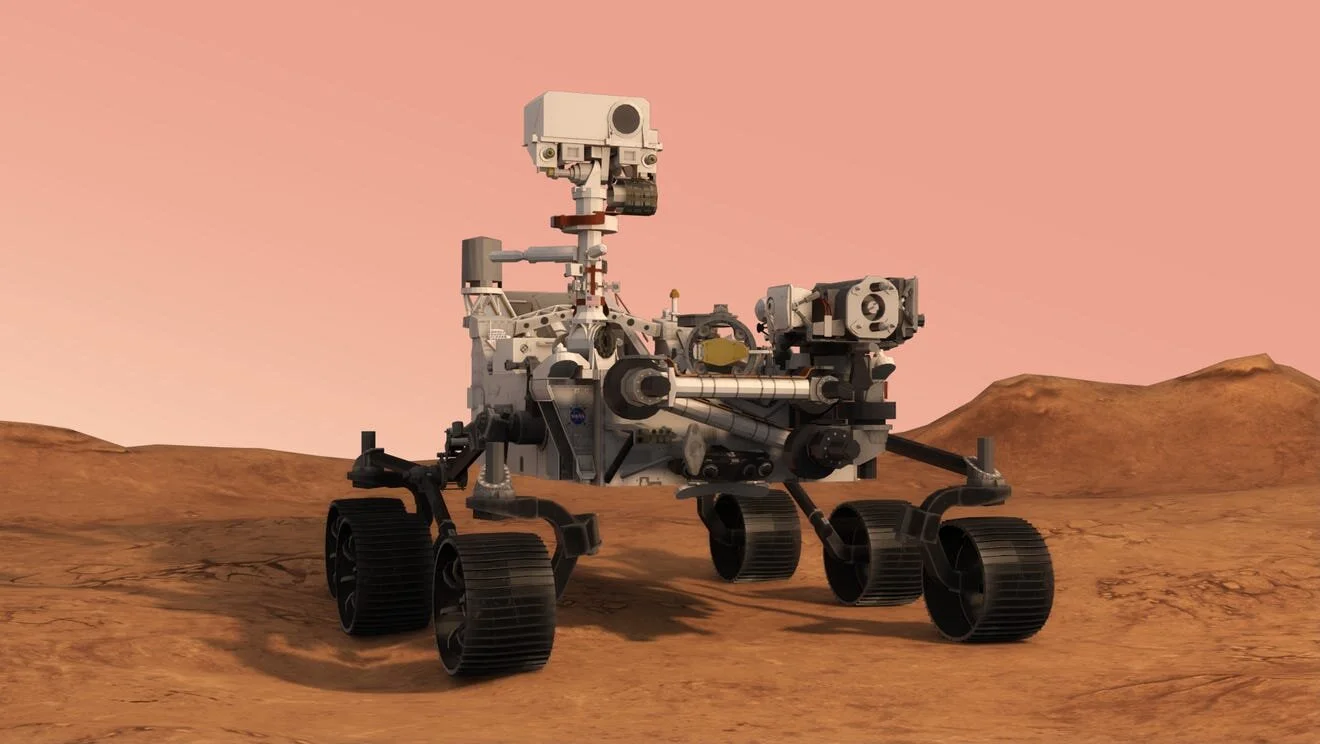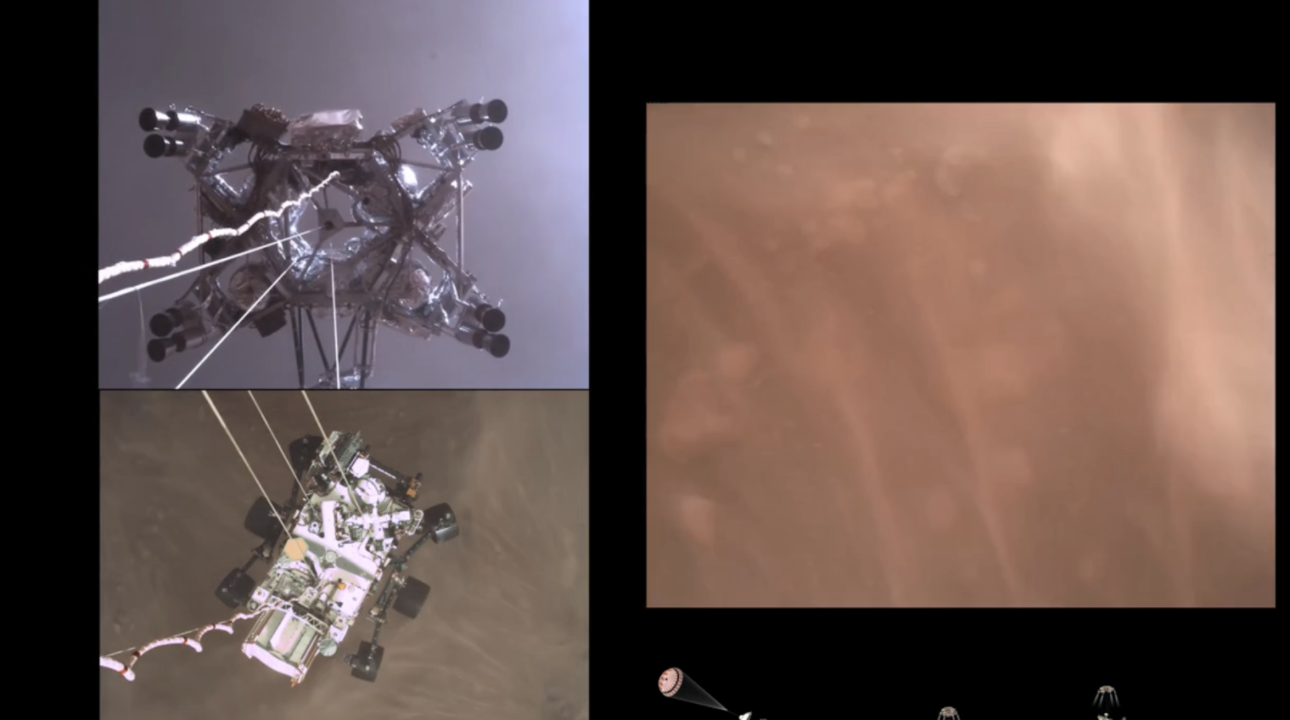Perseverance Rover
By Jacob Lucibello & Gillian Follett
On February 18, 2021, NASA’s “Perseverance” rover landed on Mars. marking a new age of exploration of the Red Planet’s surface. In this week’s Tech Education lesson, we’ll discuss how Mars exploration efforts came to this point; what scientists hope the Perseverance rover will achieve; and what future missions of Mars could potentially look like.
(Source: USA Today)
How Did We Get Here?
The first efforts to learn more about our planetary neighbor began in 1960 with the USSR’s two failed attempts to land a probe on Mars through its “Soviet space program.” Over the next decade, the USSR launched several failed endeavors to discover more about Mars, including two unsuccessful flybys and an attempted landing of a rover on the planet. During this time, however, the U.S.’s interest in Mars was also piqued, and on July 14, 1965, NASA’s small spacecraft named “Mariner 4” gilded several thousand miles above Mars’s surface, capturing close-up images of the planet for the first time.
Two of the first images of Mars, as captured by the “Mariner 14” spacecraft. (Source: Wired.com)
Since 1960, when Mars first became a focus of space exploration, there have been 43 total planned missions to launch either spacecraft that would pass or orbit Mars or rovers that would land on the planet’s surface. Following the first successful flyby by “Mariner 14” in 1974, several other countries’ space programs have also succeeded in reaching Mars, including:
The USSR’s Soviet space program, which staged the first landing of an exploratory spacecraft on Mars in 1971.
The European Space Agency, which launched a spacecraft into Mars’s orbit in 2003 (though its simultaneous launching of a probe that was planned to land on Mars’s surface failed).
The Indian Space Research Organization, which in 2013 also sent a spacecraft into Mars’s orbit that continues to monitor the planet today.
Perseverance’s Predecessors
In the two decades leading up to Perseverance’s mission to Mars, NASA has navigated four other rovers to explore the Red Planet’s surface.
The first of these rovers was named “Sojourner” and touched down on Mars on July 4, 1997. With the launch of this 23-pound probe, NASA sought to demonstrate the innovative technologies that had allowed the organization to land a fully-robotic rover — the first of its kind — on Mars’s surface. Between July and September of 1997, Sojourner returned a massive amount of information about the surface of Mars to NASA, including chemical analyses of the Mars’s geologic features, and over 17,000 images.
About seven years later, in January 2004, NASA piloted twin rovers “Spirit” and “Opportunity” to opposite sides of Mars’s surface. These two rovers, weighing 374 pounds each, were able to explore a much more extensive area of Mars’s surface than Sojourner had, which enabled the rovers to conduct thorough analyses of the rocks, soils and atmosphere of Mars. By the end of their mission, the two rovers were able to discover evidence that water previously existed on Mars. This geologic evidence has allowed scientists at NASA to reconstruct images of what Mars may have looked like in the past.
Last, but certainly not least, is the rover named “Curiosity,” which reached the surface of Mars in August 2012. Today, over eight years after its landing on Mars, Curiosity is still active and continuing its mission to discover potential signs of past or present microbial life. Prior to Perseverance, Curiosity was the most technologically-advanced rover to land on Mars’s surface, with 17 cameras and a robotic arm that contains several tools and instruments that allow it to do chemical analyses.
The Curiosity rover has been exploring the surface of Mars for over eight years (Source: NASA.gov)
The Next Phase of Mars Exploration
Perseverance, NASA’s latest Mars rover, officially touched down on the Red Planet’s surface on February 18, over six months after its July 30, 2021 launch. Perseverance will spend at least two Earth years — one year on Mars — exploring the ancient river delta that it landed in. Similar to its cousin, Curiosity, Perseverance’s main objectives involve seeking out signs of past microbial life on the planet. The rover will also collect rock and soil samples from Mars’s surface, which could potentially be brought back to Earth during a future mission to Mars.
An image of Perseverance’s deck, captured by the rover’s navigation cameras (Source: NASA.gov)
As it carries out its mission, Perseverance will also be testing out new technologies, such as an autopilot system to help the rover avoid terrain hazards (a technology called “Terrain Relative Navigation”) and several instruments that will allow it to perform more in-depth scientific analysis and testing than ever before. A list of some of these technologies and more specific details about each of them is available on NASA’s website.
If successful, these technologies could potentially be used on future missions to Mars — both by other rovers, and, potentially, by astronauts.
What Comes Next?
Perseverance will continue to carry out its mission until 2023; but the next time NASA makes a landing on Mars, it may be sending people instead of robots. In 2015, NASA Administrator Charles Bolden, Jr. announced that the organization aims to send astronauts to the Red Planet by 2030. According to Mars Daily, Bolden said Perseverance’s exploration over the next two years is also intended to “help [NASA] prepare for [a] human mission,” as a future manned mission to Mars would require robots being sent to the planet ahead of time to construct an underground base for the astronauts who plan to explore the planet.
The cameras aboard Perseverance recorded the rover’s landing on the Red Planet (Source: NASA.gov)
Additionally, Elon Musk has recently stated he is “highly confident” that his aerospace company, SpaceX, will succeed sending a manned mission to Mars by 2026, or possibly even 2024.
Will humans set foot on Mars in our lifetimes? Probably, if these numbers are anything to go on. Right now, the biggest hurdle to NASA’s ability to send a manned mission to the Red Planet is gaining sufficient government funding. SpaceX, because it is privately owned, doesn’t have this same obstacle preventing its progress — but either way, sending humans to Mars would be an incredibly expensive endeavor.
But, as the name of Mars’s newest inhabitant suggests, exploration of Mars will undoubtedly “persevere” long into the future.
Sources:
https://history.nasa.gov/marschro.htm
https://mars.nasa.gov/mars-exploration/missions/pathfinder/
https://mars.nasa.gov/mars-exploration/missions/mars-exploration-rovers/
https://mars.nasa.gov/msl/surface-experience/?drive=2176&site=82
https://www.jpl.nasa.gov/missions/mars-science-laboratory-curiosity-rover-msl
https://mars.nasa.gov/files/mars2020/Mars2020_Fact_Sheet.pdf
https://phys.org/news/2021-02-america-rovers-marswhen-humans.html





